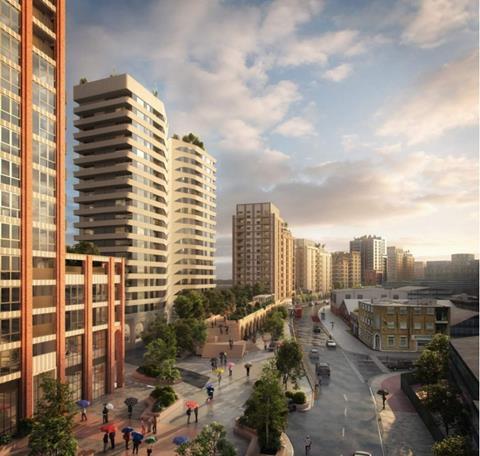Transport for London outlines different models for commercial development company
Transport for London’s (TfL) new property company could deliver 46,000 homes if it secures government funding, the mayor’s transport arm has said.
In an update to its finance committee, London’s publicly owned tube and bus operator set out more detail of its plans to deliver thousands of homes on its landholdings through a new ring-fenced commercial property company.
TfL outlined three models for delivering homes for the company, which will be funded through the issuing of share capital and the leveraging of assets to raise commercial debt.

The organisation’s baseline assumption is that the company can deliver 13,278 homes with commerical debt of £400 million. Under this plan, 8,000 homes will be started on site by March 2024, and almost 11,000 by March 2025. A total of 145 acres across more than 50 sites would be developed.
However, if the company secures enough grant funding from the government to push net capital funding to £2bn, it would deliver 46,000 homes through its ‘Housing Growth’ model, TfL said. It has identified 61 known but commercially unviable projects that require grant-funding support.
“This housing growth plan in particular has the ability to accelerate housing delivery and generate a long-term return to TfL, alongside substantial wider economic benefits,” the TfL report said. It added that discussion with the government about support for the first schemes is ongoing.
Under the most pessimistic scenario, in which commercial debt is not secured and no government funding is provided, the company would have to operate under TfL’s currently restricted funding regime, which only funds contractually committed and critical work. This would deliver 10,750 homes.
Sadiq Khan, mayor of London, has pledged that the homes will be 50% affordable housing on average across all sites developed.
Graeme Craig, director of commercial development at TfL, said: ”As part of our long-term strategy, and building on the successful work that has already taken place in recent years, we are now looking to take forward development activity in a commercial property company that is wholly owned by TfL.
“This will provide sustainable revenue to reinvest into public transport while delivering thousands of new homes for the capital, with 50% affordable housing across the current portfolio.”
Setting up a company to generate more revenue for housing without threatening transport investment or assets was also a condition of the latest financing deal with the government, but the plans were already underway. The first stage saw TfL’s commercial and property assets consolidated in a new vehicle called Transport Trading Limited Properties (TTLP) in 2019. In March, TfL approved a £2.5bn loan from London Underground to buy share capital in TTLP in order to turn it into a commercial entity in its own right. The first company’s first drawdown of commercial debt is planned for spring 2022.
TTLP currently has more than 6,300 homes with planning permission, 1,500 awaiting decision and a further 1,200 due to be submitted in the next 12 months, TfL said. It also said there are 1,301 homes under construction and 266 homes completed.
In January TfL received planning approval for its biggest development to date, an 850-home scheme in Acton, west London, designed by HOK.
Ahead of the election In April, mayor Sadiq Khan pledged to maximise the number of homes built on land owned by the Greater London Authority,
The outline plans for the property company were issued to government on 11 June. TfL has not said whether it has received feedback yet.
















No comments yet